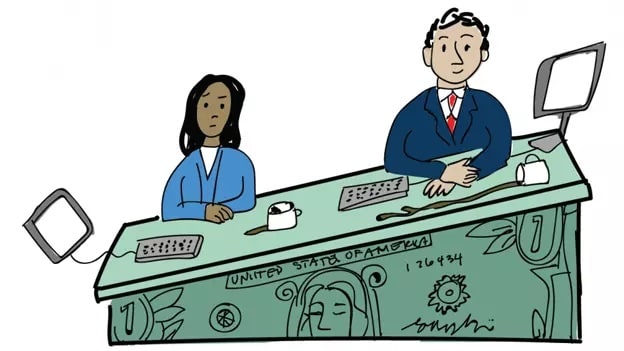A gender bias may be creeping into artificial intelligence. What role can men play?

Artificial intelligence (AI) is influencing people’s lives in more ways than one can imagine. In fact, it is shaping society. AI is embedded in most systems that people use to interact in today’s digital world. From voice-enabled assistants, data analytics tools, language modelling software, and cyber security systems, AI technologies are pushing the boundaries of digital transformation.
Not surprisingly, the AI workforce is mostly male dominated. According to a World Economic Forum (WEF) report, 78% of AI professionals are men. With mostly male-dominated experiences making their way into AI algorithms, a gender bias is slowly emerging, leading to unfair and unbalanced outcomes.
According to Harvard Business Review, there have been incidences where gender bias has made its way into AI from humans. For example, bias can be found in word embeddings. These systems can often associate ‘man’ with 'doctor' and 'woman' with 'nurse'. This is not an accurate representation of modern society.
In a digitally altered world that gives machines the ability to make decisions, technology must be free from bias. Following are three considerations for effecting positive change and instilling a more balanced approach as AI technology progresses.
Encourage women to enter the field
Hiring more women for AI roles appears to be an obvious solution. However, there seems to be a shortage of talent in most countries. An AI index report by Stanford Institute tracking the prevalence of AI skills across occupations indicates that the skill penetration rate is lower for women than for men, in most countries. It looks slightly better for India, as the same study indicates that India, along with Singapore, South Korea, and Australia are closer to reaching gender equity in AI skills. If universities and other forms of higher education create programs to encourage women to enter an AI-based course of study, we will likely see more female leaders emerge.
Establish a support system and mentorship programs
Women have also shared that one of the most critical issues they face in the technology sector is the lack of female mentors. This is a key hindrance for women as they consider entering the technology space.
It’s a case of cart before the horse. If you need female mentors in a male-dominated profession, then the men in the profession need to step up to the plate and fill the gap. The goal to increase equity and inclusion must start somewhere. Gender aside, having an expert in AI teach valuable skills to someone newer in the industry is something everyone will benefit from. Male mentors can step up in their profession and help fill this gap.
Increase the visibility of female role models in AI
To build more women role models in AI, companies should first ensure that their diversity, equity, and inclusion (DEI) strategy extends to technical roles. HR and business leaders should put in a support system including training programs to actively mentor women and encourage them to develop their skills.
Companies should also think of ways to increase the visibility of women role models in AI. By promoting their achievements and success stories, they may be able to help future generations of women scientists, engineers, innovators, and entrepreneurs. Showcasing women AI entrepreneurs, CISOs, and CIOs as role models will not only help improve the performance of many women currently in the field, but also may inspire many more to consider a career in technology and data sciences. Visibility into women leaders will help other women in the profession benchmark their success and growth while making them aware of the opportunities that exist in the field.
Broaden your scope and focus
We often place our focus on the highest levels within our organizations. Building awareness of our female executive leaders is important, but do not forget the presence of female leaders at all levels is critical. Let’s celebrate every win and not assume that every role model must be a senior leader. We need to see women in the process of technology development throughout the entire organization and at all different levels. Let’s celebrate them and raise awareness of their accomplishments.
At the end of the day expanding opportunities for women in technology is a business imperative. Women archetypes in AI will encourage more women to fill positions not just in AI but in several roles in science, technology, engineering, and mathematical professions. Closing the gender gap will not happen overnight. It will take time and dedication. With the right educational opportunities, mentorships that develop female leaders, and more effort placed on showcasing their success, we will be well on our way. Closing the gender gap will allow us to minimize gender bias at the development stage, ensure a more accurate reflection of society, and create strong business performance.















